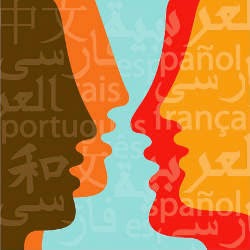Translating a document into multiple languages can be an expensive proposition. A user manual, product data sheet, or a patent application that needs to be translated for multiple countries and jurisdictions can easily cost tens of thousands of dollars.
But your translation costs can be significantly lowered if two or more of your target countries speak (roughly) the same language.
For example, one Latin American Spanish translation (with minor modifications) will suffice for Mexico, Venezuela, and Argentina, and the other Spanish-speaking Latin American countries. You probably already knew that.
But that Latin American Spanish translation can also be converted into European Spanish and used in Spain. Though there are important differences in grammar and vocabulary between European and Latin American Spanish, they are similar enough that one Latin American Spanish translation can be revised and utilized in Spain (and vice-versa). The fee for converting the translation is a fraction of the cost of commissioning an entirely new translation.
This is also the case when you need to translate a document for both Brazil and Portugal. While there are big differences in spelling, grammar, and terminology between Brazilian Portuguese and European Portuguese, one translation for either target country can still be edited and revised for use in the other.
The third common language that converts is Chinese. There are two forms of written Chinese: Simplified and Traditional. Simplified Chinese is used in mainland China and in Singapore. Traditional Chinese is used in Taiwan and Hong Kong and sometimes referred to as ‘Taiwanese.’ Simplified Chinese characters have fewer strokes than Traditional Chinese, which is why it’s called “Simplified.” Traditional Chinese also uses far more characters (about 13,000 vs. about 8,000 in Simplified Chinese). Despite these differences, it is still quite feasible to commission one translation for use in both mainland China and in Hong Kong and Taiwan. But because Traditional Chinese is more complex than Simplified Chinese, it is much easier to convert TC to SC than the other way around.
The bottom line: If you are translating for Latin America and Spain, Brazil and Portugal, or China and Taiwan, you can lower your translation costs substantially by asking your translation company to provide a single translation, and then converting that translation for use in the other country. Morningside offers this conversion service, which is especially relevant to our legal and patent translation clients. If you have questions about converting a translation, you can contact Morningside via phone or email and we will be glad to assist.


